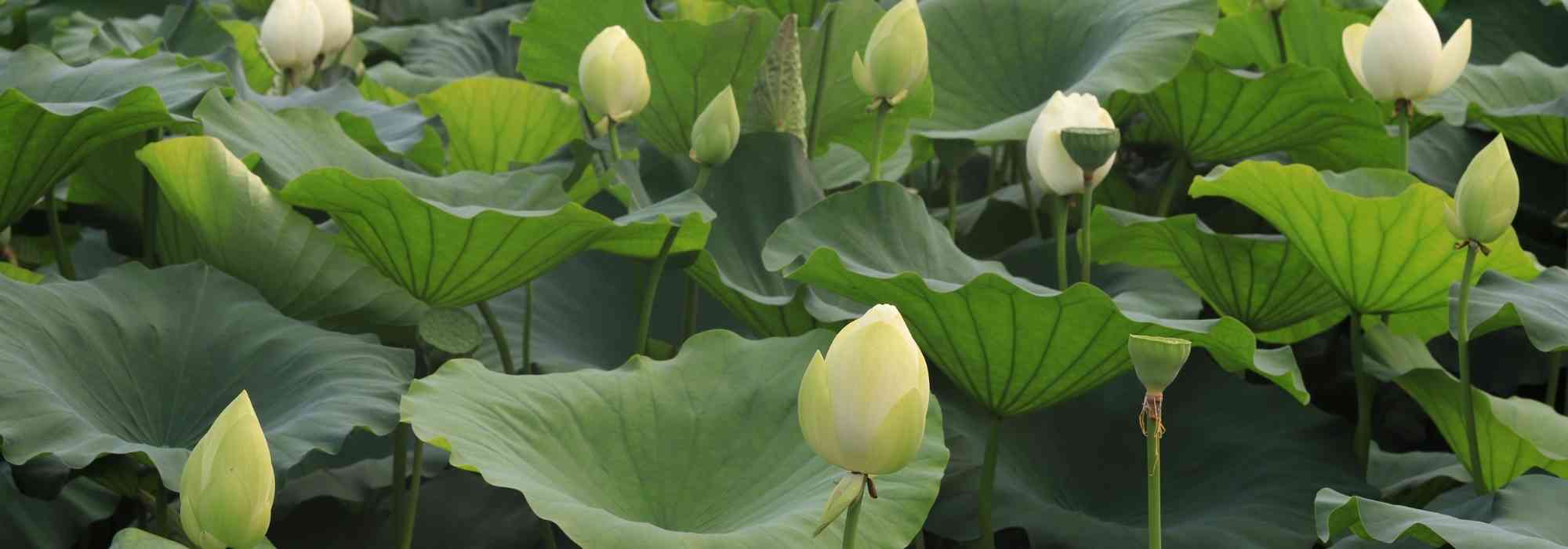
Wintering of pond plants
Protecting, storing, and relocating your aquatic hardy plants
Contents
Very popular, pond plants are often exotic ornamental plants, species or varieties from equatorial or southern regions. Therefore, they require special attention once autumn arrives to survive in our latitudes. Discover our tips to protect them during winter and help them get through the cold season smoothly.
Which aquatic plants should be protected in autumn?
Exotic plants established in ornamental ponds can hardly withstand abrupt seasonal changes and the negative temperatures that accompany them. Within a few days, they begin to decline. It may then be necessary to relocate them within the pond (placing them deeper) or even bring them into a frost-free room dedicated to their wintering.
Among these, we can mention: Papyrus (Cyperus papyrus), lotus (Nelumbo nucifera), water hyacinths (Eichhornia crassipes), pontederias (Pondeteria cordata), water lettuces (Pistia stratiotes), and certain species of water lilies (Nymphea sp.), particularly the exotic species.
Water hyacinths, water lettuces, and hybrid water lilies must absolutely spend the winter indoors!
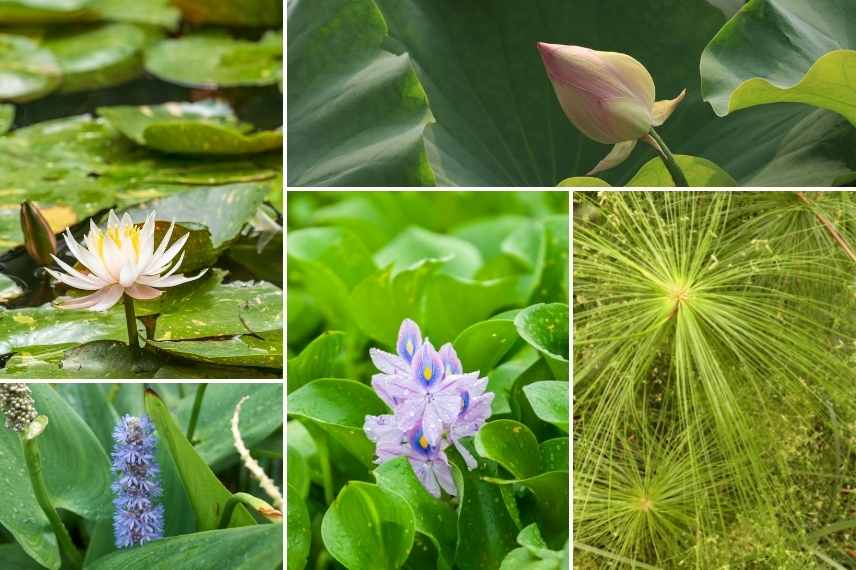
Water lilies, Lotus, Water hyacinth, Pontederia cordata, Papyrus
When and how to proceed?
When autumn weather reports start announcing nights with temperatures below 10 degrees, it will soon be time to think about putting your tender aquatic plants away.
We will proceed logically for their protection:
Preparing a wintering room
Before removing floating and container plants from the pond, you need to prepare the room and the containers ready to receive your plants. The place should be bright, clean, and maintain a constant room temperature. A conservatory or lean-to greenhouse is ideal for brightness but may cool down in winter. In this case, consider heating it minimally to keep it frost-free.
The windowsill of a living room or kitchen may suffice if you do not have a conservatory.
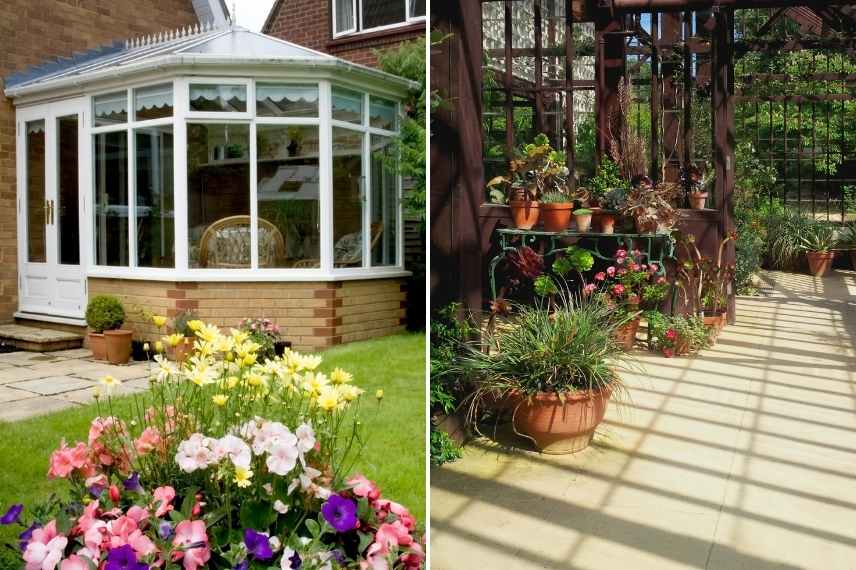
Choosing containers
Almost anything can serve as a container for your plants: buckets, old aquariums, bins, basins, bathtubs… Only the depth of the containers is limiting.
Maintenance
During these long months, maintenance will be limited to adding water (tepid) to counter evaporation. Don’t forget to keep an eye out for any signs of rot on your plants. To prevent this issue, place a few pieces of charcoal in your water for antifungal action. There is no need to add liquid fertiliser during this period, as the plants will not grow over winter.
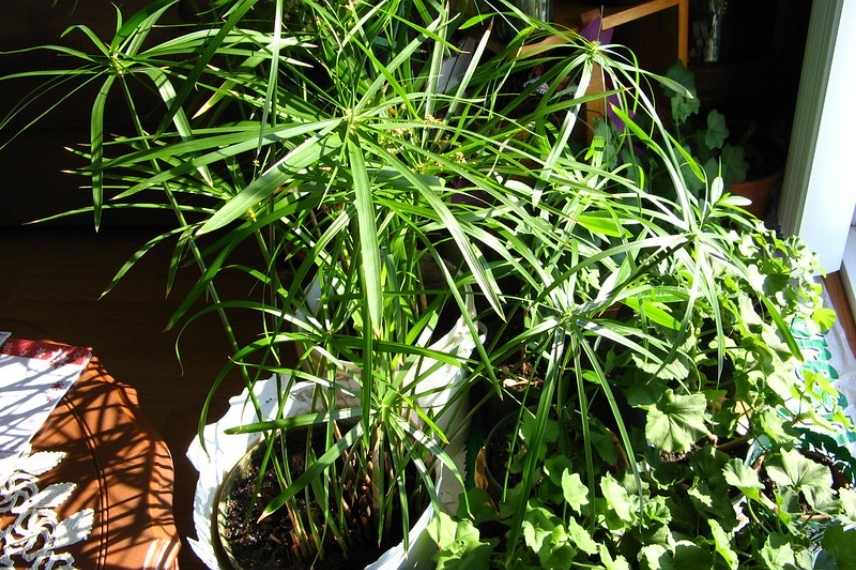
Cyperus Papyrus (© Andrea 44)
Preparing your plants for their winter quarters
The case of floating plants
These plants (whether exotic or not) are often very prolific during spring and summer. Their standing crop can even take over the entire pond without the gardener’s control. You can therefore select a portion to keep warm and reluctantly let the other part wither away. Place some vigorous cuttings in a container and remove the rest (exotic species) from the pond. Remove dead leaves or stems ready to flower to avoid exhausting the plant. Avoid directly exporting these plants to compost or the tip: this would lead to the death of thousands of small animals, including amphibians! Leave them for 24 hours at the edge of the banks so that they can return to the pond for wintering.
Affected plants: the water milfoil (Myriophyllum brasiliense), water hyacinth (Eichhornia crassipes), water lettuce (Pistia stratiotes)…
Aquatic plants in containers
These plants will be “dressed” before being brought into the house: all dead, damaged, or diseased elements from the pot (leaves, stems, rootstocks…) and the organic matter at the base will be removed. Also remove any flower buds that would exhaust the plant late in the season. Finally, remember to let the containers drain near the pond to allow small animals and other aquatic larvae to return to their habitat.
On a case-by-case basis
- Generally very hardy, water lilies withstand cold quite well; however, ice can affect their rootstocks. In nature, the water lilies in our regions bury their roots more than 50 cm deep to escape frost. We must imitate this to preserve ours by placing the containers at this minimum depth. If your water depth is insufficient, place them inside your house as mentioned above. It is therefore not obligatory to bring all water lilies indoors! Only hybrids of Nymphea with blue flowers are very sensitive to frost, just like the famous giant water lily, Victoria cruziana. These varieties cannot tolerate negative temperatures at all, so a warm wintering is necessary to keep them.
- Other less hardy aquatic plants may survive winter by being brought down to the bottom. For example, we can mention Iris ensata, water vanilla (Aponogeton dystachios) or marsh sweet flag (Acorus calamus). The lotus and papyrus must be kept under 80 cm of water or, if not possible, be brought indoors.
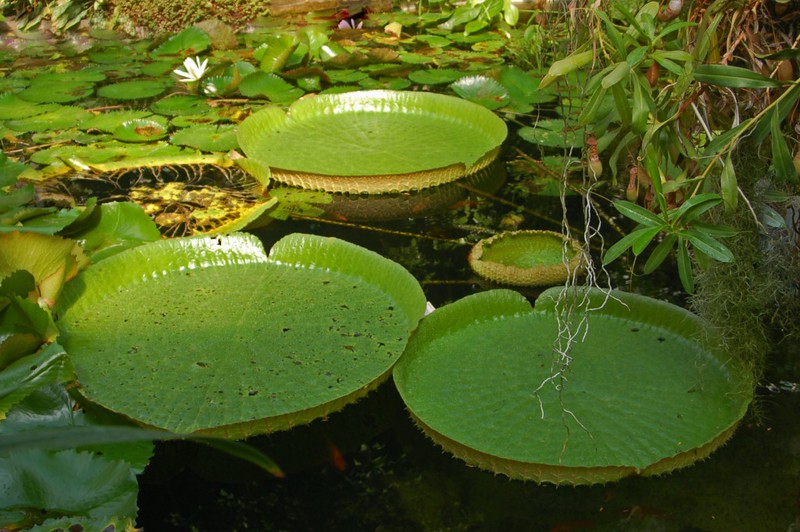
Victoria curziana (© Ettore Balocchi)
Regarding native plants
It goes without saying that all our native plants (naturally present in our regions) hardly need protection once autumn sets in. Indeed, most of our paludal plants will spend the winter in the form of rootstock, stump or tapetum at the bottom of the water, waiting for the return of spring.
At most, we can limit the severity of water uptake by frost using “floaters” that will allow gas exchanges to continue between the air and our native plants. These floaters can take the form of empty bottles, logs, balloons…
These plants adapted to our climates and frost can remain in place. We advise against disturbing the drying foliage as autumn light diminishes. The sedges, irises, and other bulrushes will be happy to keep them for a few extra months.
These leaves will protect the interior of the stump from the harshness of winter. You can remove them in spring to prevent excess organic matter in the water.
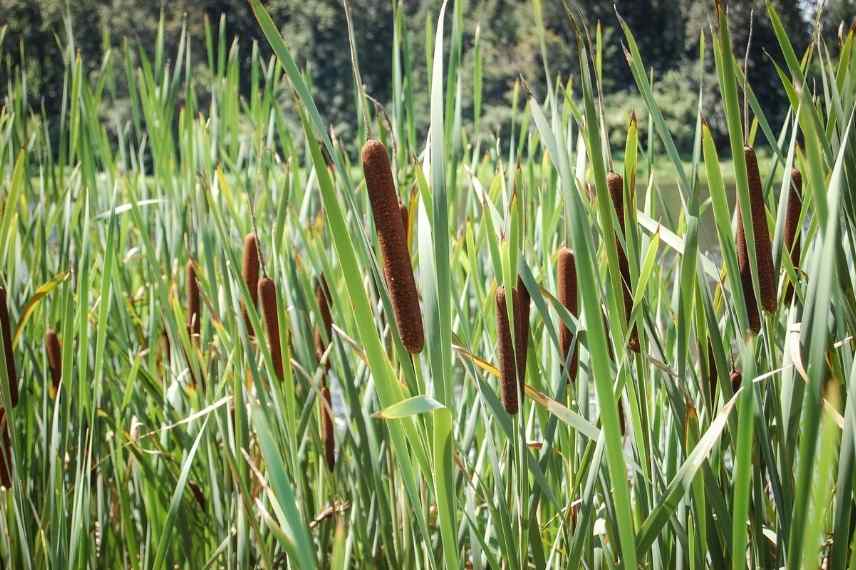
Typha is completely native
To go further
Some aquatic plants sold commercially have become invasive and very harmful to the aquatic ecosystems in our regions. Canadian elodea, giant waterweed, floating pennywort, myriophyllum, and water hyacinth pose (among others) enormous problems for waterways and freshwater environments by completely choking them. Do not disseminate these plants into the environment!
- Subscribe!
- Contents
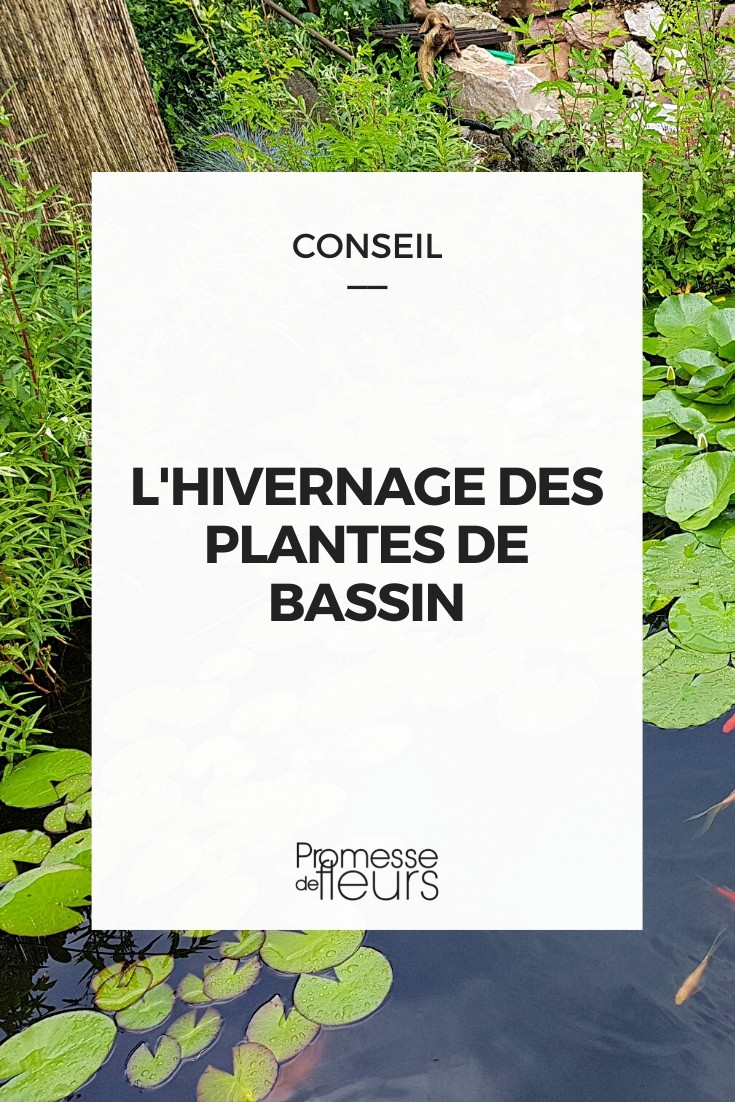































Comments